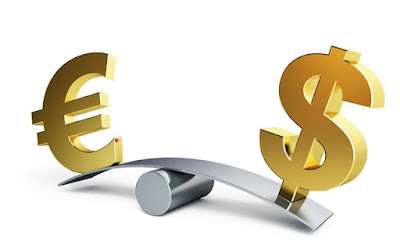The US dollar is one of the strongest currencies and is the main currency traded against other currencies, the Euro, also, is consider one of the strongest and main currencies which compete with the dollar in his position as the first global currency despite his small history
 |
| factors affect EUR / USD currency pair |
The euro is the result of the union of European countries under what is known as the European Union, during trade in forex market you will notice that Eur/USD trading IS more than any other currency in the foreign exchange markets, therefore, we should identify the factors affecting the Eur/USD. when the demand and supply of Eur/USD are equal we called that the exchange rate of EUR / USD or EUR / USD in all countries of the world.
Factors affecting the euro / dollar exchange rates
there are many factors affecting the euro - dollar exchange rates, but can be summarized in four key determinants affecting the euro / dollar, the first of the exchange rate is the interest rate and the rates disparity, then sectors of the relative prices of goods, commodities, metals and oil prices, the relative financial position .The main theories for the EUR/USD exchange rate:
theory of one price: normally, in free markets competitivity is the main element, therefore, similar goods which sold in the same currency must be sold with the same competitive prices to all States.The effects of interest rates: the interest rates fluctuation hinder the movement of capital flow to and within countries, thus if the interest rates equalized it may archive the stability of exchange rates.
Supply and demand: the supply and demand are the main factors affecting the euro / dollar exchange rates, and controls the forces of demand and supply factors, including (the business environment, the stock market, political factors, the economic reports).
Patterns of exchange rate systems of the EUR/USD?
there are four Patterns for the exchange rate of euro/dollar that works within,the first one:
fixed exchange rates: in this system central banks of a State intervene to work in the currency market to maintain the stability of exchange rates based on what is it planned and does not allow for any other factors to change Exchange rates without the acceptance of the central bank.
The second:
almost fixed exchange rates is through the consent of central banks which predetermine the ceiling allowed for the movement of its currency and interest rate which helps to achieve this movement,
The third:
is leaving the currency to move within market forces (supply, demand) which called "free- currency floating" like what Germany did after the collapse of the Bretton Woods agreement in 1971,
But now rarely the Central Bank of a country leave the currency exchange for free-floating without controlling the rates and that is the fourth prong which is known as exact flotation and it commonly used to increase exports of that State.